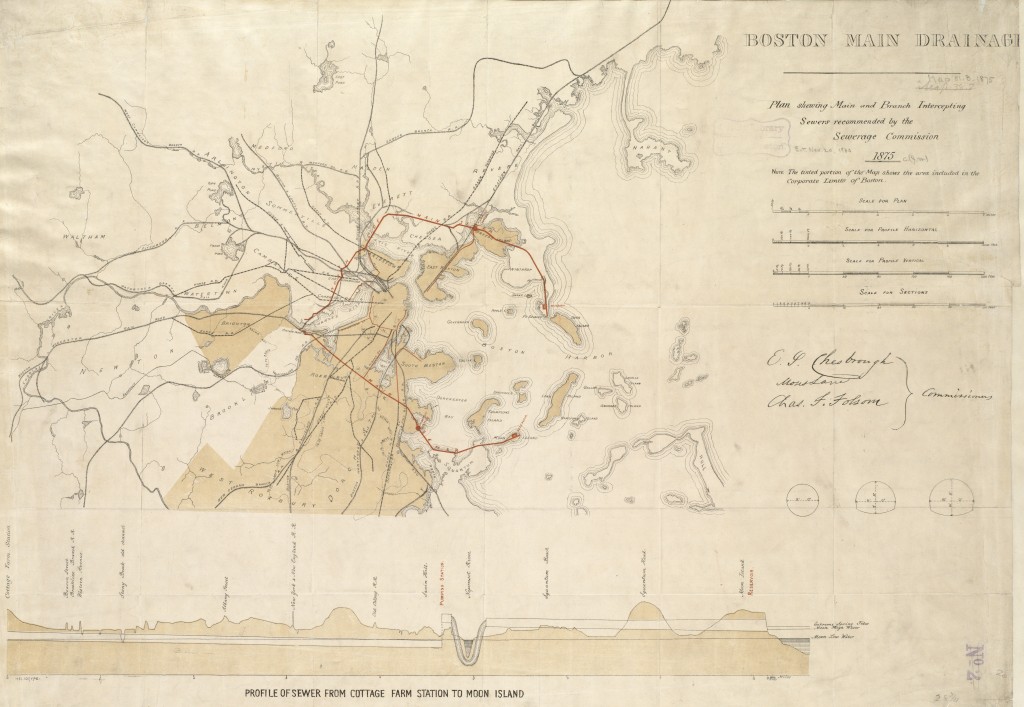As Boston grew and its residents learned the dangers of pollution, they understood the problems resulting from the release of sewage into the harbor at Moon Island. Bostonians called for a cleaner harbor, and by the 1960s and 1970s treatment of sewage was rerouted to Deer Island.
But the Boston Water and Sewer Commission still used the Calf Pasture Pumping Station on occasion. In the 1970s, during heavy rains, excess street water was channeled to the pumping station, where it was treated behind the station, on the side of the building that faces the UMass Boston campus. Eager to end such use on their campus, in 1999, university administration began negotiations to purchase the property.
The Boston Water and Sewer Commission was reluctant to give up the Calf Pasture Pumping Station, because they would have to build a new facility somewhere else in the Boston area. Local politicians took up the debate. After a dozen years, in 2012 the university finally reached an agreement with the city and the Boston Water and Sewer Commission, and purchased the pumping station.
What is the future of the Calf Pasture Pumping Station at the University of Massachusetts Boston? How can it be used? Many faculty members and administrators have made suggestions for possible re-use of the building. There are many challenges to conquer before renovation can occur. These include environmental remediation at the site, and completing a structural report to assess the work needed to reuse the space.
Recently the University released a large twenty-five-year plan for renovations to the UMass Boston campus, but the pumping station is not included in this plan. The university did not yet own either the Calf Pasture Pumping Station or the Bayside Expo Center in 2007, when the 25 Year Master Plan was unveiled
Today, major redesign of the UMass Boston campus and the construction of new buildings and roadways are underway. In the new design, a new street will bring visitors in front of the majestic Calf Pasture Pumping Station, though its future use remains uncertain.
At present, boarded up windows and fencing secure the pumping station against general access. At the front of the building, construction of a new roadway has commenced, and the university prepares to build its first residential complex near the site.
Rehabilitation, preservation and reuse of the Calf Pasture Pumping Station will require great financial resources as well as vision. This historic structure, its historical and architectural significance documented by a National Historic Register nomination, remains at risk. The physical condition of the building continues to deteriorate, as local development and the need for space put additional pressure on this historic site.
The Calf Pasture Pumping Station provides us with access to multiple stories of the past that have relevance to the present. It engages histories of technology, architecture, public works, public health, labor, environment, neighborhood, housing, and politics.
What ideas do you have for bringing these histories into the present, for the benefit of Boston’s citizens? What histories matter to you?











